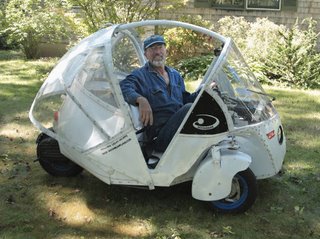
Creatures thriving at the hot and cold extremes of the marine environment have amazed scientists who are
celebrating the discovery of 500 previously unknown species in the oceans in the past year.
They have been found beneath ice shelves, in the darkest, deepest abysses and in scalding water around hydrothermal vents on the sea bed. They have smashed records for distance, numbers and sheer tenacity in the most inhospitable habitats imaginable.

Among the most astonishing discoveries is a shrimp living within inches of the hottest water yet found at the bottom of the oceans. The animals live on a thermal vent at the equatorial floor of the Atlantic Ocean that spews out water and a soup of heavy metals heated to 765F — more than hot enough to melt lead! The shrimps dependent on the vent live in a narrow band of water at 140F and because of swirling currents are frequently washed with water at 176F or hotter. Scientists are intrigued about how they survive at such extreme temperatures and are trying to find out why their proteins do not break down. The species has yet to be determined, but is very similar to the
Rimicaris exoculata shrimp seen at cooler vents.

At other oceanic extremes scientists discovered dozens of animals, including jellyfish, living beneath ice 2,300ft thick and 125 miles from open water. Among the biggest surprises discovered this year by census takers in the Coral Sea, northeast of Australia, was Neo glyphea neocaledonica, a shrimp previously thought to have died out 50 million years ago. It has been dubbed the “Jurassic Shrimp”. The biggest marine animal to be discovered was
Palinurus barbarae, a rock lobster located off
Madagascar. It weighed 4lbs and its body, excluding legs and pincers, was more than 18in long.
Other previously unknown species include a squid from the mid-Atlantic that rather than simply bite and swallow chunks of prey is thought to be able to chew its food, and
Kiwa hirsuta, a furry crab living on a hydrothermal vent 900 miles from
Easter Island.

In the Sargasso Sea, 200 zooplankton species, 12 previously unknown, were found three miles beneath the surface while in the air the
sooty shearwater broke the record for migratory distance by flying a round trip of 46,000 miles!
 If a zebrafish loses a chunk of its tail fin, it will grow back within a week. Like lizards, newts, and frogs, a zebrafish can replace surprisingly complex body parts. A tail fin, for example, has many different types of cells and is a very intricate structure. It is the fish version of an arm or leg.
If a zebrafish loses a chunk of its tail fin, it will grow back within a week. Like lizards, newts, and frogs, a zebrafish can replace surprisingly complex body parts. A tail fin, for example, has many different types of cells and is a very intricate structure. It is the fish version of an arm or leg.













 According to
According to  These proteins are very unusual in the animal kingdom. They reflect all wavelengths of light that hit at any angle. The material looks very white in white light, and blue in the bluish light found beneath the ocean's waves. They also match the intensity of the surrounding light, all of which helps the creatures to blend into their surroundings.
These proteins are very unusual in the animal kingdom. They reflect all wavelengths of light that hit at any angle. The material looks very white in white light, and blue in the bluish light found beneath the ocean's waves. They also match the intensity of the surrounding light, all of which helps the creatures to blend into their surroundings.






 The area of interest is the Mariana Arc, a 745 mile chain of volcanic
The area of interest is the Mariana Arc, a 745 mile chain of volcanic 















